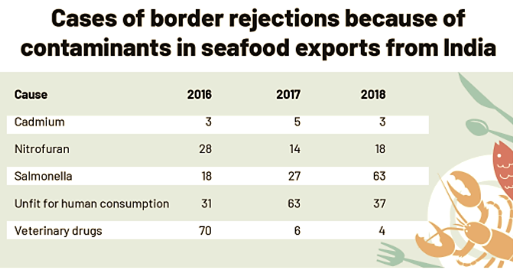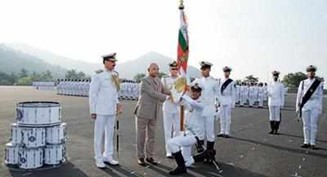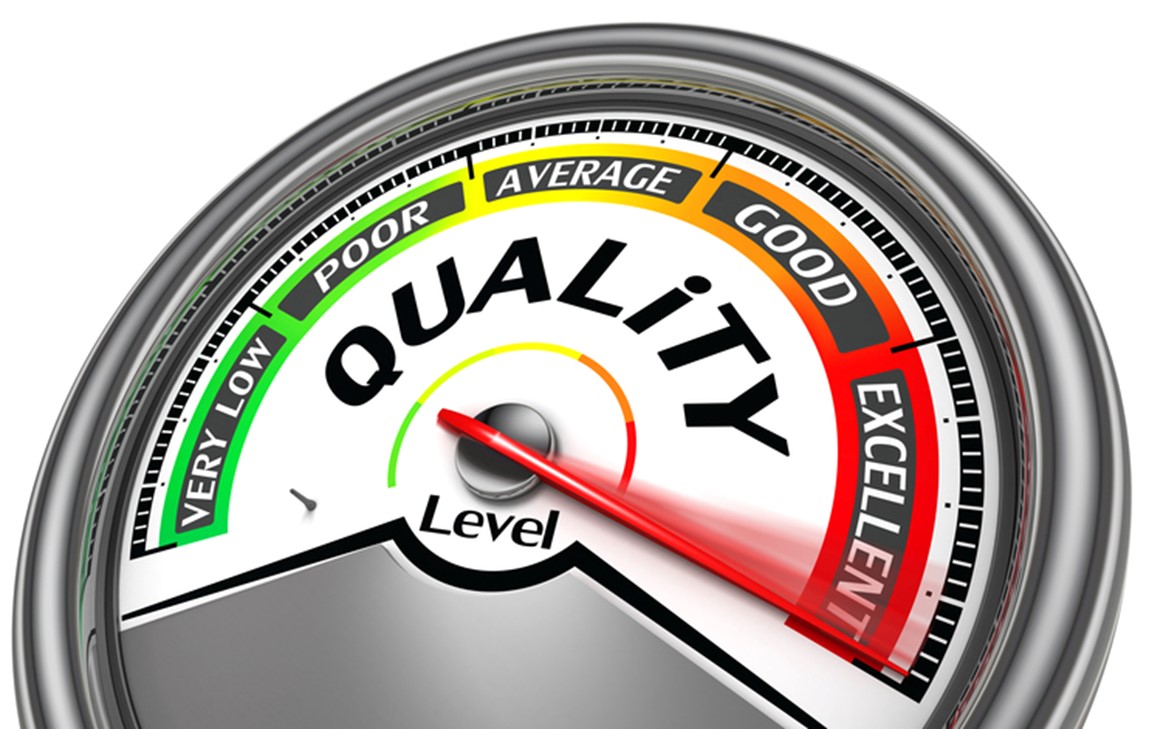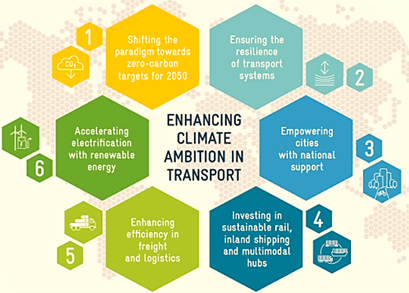Thursday, 2nd September 2021
India’s Seafood industry affected by pollutants
In News
Recently, the European Union imposed stricter compliance norms on Indian seafood imports.
About the News
- Background: As per the Ministry of Commerce there has been a decline in exports due to a spate of past rejections and the consequent delisting of certain establishments by EU countries.
- Reason for Rejections: High levels of antibiotics, toxins, and even heavy metals were found in seafood from India.
- Significance: India has a share of 4.1% in global seafood exports and its reputation is taking a beating because of marine pollution.
- India seafood exports saw a decline of 7.9% in 2019-20. Consumption of contaminated seafood adversely affects public health.
Sources of Marine Pollution
- Plastic pollution: Chemicals leeched from plastic get accumulated in the body of the fish. Micro-plasticshave amplified this thread as they can accumulate in the fish muscle.
- Sewage from cities: Nearly 80% of our sewage is not treated, and it contaminates the breeding and feeding grounds of fish.
- Industrial effluents: As there are no guidelines on the limits of heavy metals in the industrial effluentsdischarged, thus increases the chances of heavy metal contamination.
- Fertilizer run-offs: It creates algal blooms which leads to death of fish stocks.
- Miscellaneous: Accidental spill of oil and chemicals.
Way Forward
- Short Term: Increase testing facilities and stricter compliance of quality standards to minimise border rejections.
- Long Term: Intercept the sources of marine pollution before they reach the oceans and banning of Single Use Plastic from Just 1st2022 is a good start.

Sources:
Adopting crypto assets as currency is a risky bet: IMF
In News: El Salvador having officially decided to adopt Bitcoin as a legal tender, the International Monetary Fund has warned about the impact its adoption would have on a country’s macroeconomic stability.
Crypto assets as National Currency-A Step Too Far!
- Inadvisable shortcut: The IMF has warned that privately issued crypto assets like bitcoin come with substantial risks and making them equivalent to a national currency is an inadvisable shortcut.
- Outweighs the potential benefits: However, secure, easy to access, and cheaper to transact, in most cases its risks and costs outweigh the potential benefits.
- Too Volatile: According to the IMF, even if were given legal tender or currency status, households and businesses will have very little incentive to price or save in a parallel crypto asset such as Bitcoin, as its value is just too volatile and unrelated to the real economy.
- More chaos with more options: If goods and services were priced in both a real currency and a crypto-asset, people would spend significant time and resources choosing which money to hold as opposed to engaging in productive activities.
- Exchange Rate Risk: Government revenues would be exposed to exchange rate risk if taxes were quoted in advance in a crypto asset while expenditures remained mostly in the local currency, or vice versa.
- Inevitable fluctuation of financial institutions: Banks and other financial institutions could also be exposed to the massive fluctuations in crypto-asset prices.
Source:
- Adopting crypto assets as currency is a risky bet: IMF
- Adopting crypto assets as currency is a risky bet: IMF
- Cryptocurrency
Image source:
Change in NPS rules
In News
The Pension Fund Regulatory and Development Authority (PFRDA) has revised the rules for those joining it after 65 years of age.
The Revised guidelines
- Age Limits: The pension fund has revised the guidelines on entry and exit following an increase in the maximum age for joining the NPS from 65 years to 70 years of age. The entry age for NPS has been revised to 18-70 years from 18-65 years.
- Participation: Any Indian citizen and Overseas Citizen of India (OCI) in the age group of 65-70 years can also join and continue up to the age of 75 years.
- Asset allocation: Ones can allocate his/her contributions to different asset classes through 'Active Choice' or 'Auto Choice'. Under 'Active Choice', a subscriber has more say on allocation of funds across asset classes, while in 'Auto Choice' the funds gets invested in pre-determined proportion as per the age of the subscribers.

- Contribution classification: The contributions of subscribers are invested by the PFs (chosen by subscribers) in compliance with the investment guidelines for each asset class -- equity, corporate bonds, government securities and alternate assets.
- Exit conditions: Exit before the completion of three years will be treated as 'premature exit'. Under premature exit, the "subscriber is required to utilise at least 80% of the corpus for purchase of annuity and the remaining can be withdrawn in lump sum".
About NPS
- National Pension System (NPS) is a retirement benefit Scheme introduced by the Government of India to facilitate a regular income post retirement to all the subscribers.
- PFRDA (Pension Fund Regulatory and Development Authority) is the governing body for NPS.
- It is sponsored by the government and was started in 2004 for all government employees. The scheme was made open to all citizens in 2009. It is a voluntary and long-term retirement scheme.
Sources:
Image Source :
GPay’s Digital (FDs)
- Context: Google Pay (GPay) has launched digital Fixed Deposits in tie-up with Equitas Small Finance Bank.
- This initiative enables GPay users to book fixed deposits (FDs) on Google Pay in less than 2 minutes without having to open a bank account.
- The consumers through the GPay app can book high-interest rate FDs fully digitally without having to open a savings account with Equitas Bank, thus enabling an easy, safe and hassle-free experience.
- On maturity, principal and interest of the FD go directly to the Google Pay user’s existing bank account which could be in any bank in India.
- If a GPay user chooses to prematurely withdraw the deposit, the proceeds will reach their bank account as quickly as the same day.
Source:
- Google Pay launches digital FD in tie-up with Equitas Small Finance Bank
- Equitas SFB launches digital FDs on Google Pay in tie-up with Setu
Image Source:
Equitas SFB launches digital FDs on Google Pay in tie-up with Setu
30 years of 1991 Reforms – A Stocktake
In News
The year 2021 marks 30 years of the historic 1991 economic reforms in India.
About the Economic Reforms introduced in 1991
- With the arrival of 2021, the liberalization regime launched in 1991 completes 30 years. 1991 was a landmark moment in India’s post-independence history that changed the nature of the economy in fundamental ways.
- India’s post-1990 economic strategy dismantled the vast network of controls and permits that dominated the economic system, redefined the role of the state as a facilitator of economic transactions and as a neutral regulator and moved away from a regime of import substitution and integrates fully with the global trading system.
What were the Economic Reforms of 1991?
Stabilisation Measures
- Devaluation of Rupee: The reforms began with a devaluation of the rupee with the aim of making Indian exports more competitive.
- The freely floating exchange: It provided a mechanism to balance the imports with the exports, since excess demand for imports would lead to a depreciation.

- Borrowing through Gold: A total of 46.91 tonnes of gold from the reserve assets of the RBI were transferred to the Bank of England, which enabled India to borrow $400 million to solve its liquidity problems.
- The government had also received emergency loans from the International Monetary Fund in two tranches totalling around $2 billion earlier in the year.
Structural changes through the LPG Reforms
- Trade policy: As part of its efforts to boost exports, the Indian government announced a new trade policy that sought to bring a change in the licensing process. It also linked non-essential imports to exports to discourage such imports.
- Concept of tradeable exim scrips were introduced to increase exports and the routing imports through state-owned firms was removed and private participation was increased.
- New industrial policy: The policy relaxed some of the provisions in Monopolies and Restrictive Trade Practices Act to facilitate easier entry and restructuring of businesses by facilitating mergers and amalgamations. The policy ended the public sector monopoly in many sectors.
- Financial Sector Reforms: Reforms like increase in corporate tax, introduction of tax deducted at source, increase in the prices of cooking gas cylinders, fertilisers and petrol, removal of sugar subsidy etc. were brought in.
Why were the reforms introduced?
- The BOP Crisis: The BOP had decreased India’s Forex reserves to only of 3 weeks. The reason for this was a sharp increase in oil prices and a fall in remittances due to 1990-91 Gulf War. External debt was 23% and internal public debt was 55%. It was a serious threat to the sustainability of the growth process.
- The marketist U-turn: India’s economic policymaking came against the backdrop of sweeping changes within the advanced economies. The post-war consensus around Keynesian demand management was abandoned in favour of supply-side economics and neoliberal policies.
- Fiscal Situation: A fiscal deficit of 8 per cent of gross domestic product (GDP) and a current account deficit of 2.5 per cent of GDP all added to the government’s woes. Double-digit inflation numbers also added to the burden of the common man.
- Structural problems: The government wanted to bring in structural and fundamental changes to the import-substituting industrialization strategy and open up the economy to the world for improved economic growth and sustainability.
What have been the impacts of these reforms in 30 years?
Success Stories
- Paradigm Shift: The 1991 reforms unleashed the energies of Indian entrepreneurs, gave untold choice to consumers and changed the face of the Indian economy.
- Liberalization was adopted as the guiding principle of governance and all governments since 1991, including the current one, have broadly stuck to that path.
- High Economic Growth: The reforms are credited and applauded for the high economic growth seen from 1991 to 2011 and substantial reduction of poverty from 2005 to 2015.
- Foreign Trade: The result has been a marked increase in foreign trade, which has improved economic efficiency, giving consumers and businesses a wider choice of final goods and intermediate inputs to purchase.
- New Business Class: Liberalization challenged traditional beliefs about caste, communities and business family groups. A slow fade materialized, giving rise way to the idea of the business class. First-generation entrepreneurs pushed forward, unsettling the traditional pecking order.
- Global Economy: The 1991 reforms were really about integrating India with the global economy. It marked a major change in the mindset. The notion of socialism made way for consumerism. It was a heady time of the entry of major foreign brands into India.
- Rise in IT Industry: Economic reforms did play a critical role in the rise of IT industry in India. According to NAASCOM, the industry association of India’s IT industry, the IT sector is a $194 billion industry and contributes around 8% of India’s GDP.
- Fiscal consolidation: The 1991 Budget made the first noise about the need for fiscal consolidation. One of the biggest milestones of India’s post-reform phase was the adoption of the Fiscal Responsibility and Budgetary Management (FRBM) Act in 2003.
The Unsuccessful Areas
- Jobless Growth: Even the high-growth years, the Indian economy has been failing to generate sustainable livelihoods for the masses leading to a ‘jobless growth’.
- Crony Capitalism: The distinction between business-friendly and market-friendly, that hasn’t been resolved yet. This has led to rise of crony capitalism.
- Industrial Progress: The share of manufacturing in GDP has not increased much. It was 14.5% in 1991-92 and stood at just 17.1% in 2019-20. It is the biggest proof that there are other structural impediments to an industrial revolution in India.
- Fiscal Deficits: Fiscal deficits, while they have come down compared to where they were in 1991, have not stabilised to the levels envisaged in the FRBM Act. The pandemic’s shock is likely to administer a long-term shock to fiscal consolidation.
- Direct Taxes: The share of direct taxes in total tax revenue of Centre and states fell from 18.3% in 1981-82 to 16.3% in 1990-91. This share reached a peak of 43.2% in 2009-10 but has since then fallen steadily.
How do these reforms need to be modified to suit the current economic conditions?
- Increase Investments: Apart from reforming key institutions, the government will need to step up public investments to boost growth. A proper climate for investment must be created by changes in corporate tax rates and supportive policy framework

- Opening the Economy: There is need to open the economy more as India has been reluctant to partner with others in deeper trade agreements. As a result, India has missed important opportunities to continue to improve its economic performance. Example: Bangladesh has overtaken India in per capita income, according to the International Monetary Fund.
- Address Fault lines: As Covid has exposed the fragilities of the economy, there is need to work on factors like labour migration problems, supply chain resilience, health and education infrastructure, manufacturing sector etc.

Question: Discuss the reasons which led to the economic reforms in the year 1991. Analyse the impact of these reforms.
Sources:
- Looking back on the 1991 reforms in 2021
- Reliving the landmark 1991 economic reforms
- India's trade reforms 30 years later: Great start but stalling
- Only in a crisis does India reform and we’re seeing signs of it now
- Like 1991, the 2021 crisis presents an opportunity
- 1991 reforms aimed at more than just BoP crisis
- The 1991 Budget, in hindsight
- How Narasimha Rao and Manmohan Singh rescued India in 1991 and made history
- Indian Economic Reforms: A Stocktaking
- New Economic Policy of 1991: Objectives, Features and Impacts
World War II
On September 2, 1945, Japan formally surrendered to the Allied Forces, bringing an end to World War II. By the summer of 1945, the defeat of Japan was a foregone conclusion. The Japanese navy and air force were destroyed. The Allied naval blockade of Japan and the intensive bombing of Japanese cities had left the country and its economy devastated. After the Hiroshima attack, Japan’s supreme war council favored acceptance of the Potsdam Declaration, which demanded the “unconditional surrender of all the Japanese armed forces.

Source:
Commemorative Coin
This is the image of special commemorative coin, released on the 125th Birth Anniversary of Srila Bhaktivedanta Swami Prabhupada Ji, by the Prime Minister of India. Srila Bhaktivedanta Swami Prabhupada founded the International Society for Krishna Consciousness ISKCON, commonly known as the “Hare Krishna movement”. ISKCON has translated Shrimad Bhagvad Geeta and other Vedic literature in 89 different languages, playing a stellar role in the dissemination of Vedic literature across the world.

Sources:
Image source :
Y-Break’ app
- Context: The Ayush Ministry has developed a five minute Yoga protocol for professionals.
- The five-minute protocol intends to introduce people at the workplace to yoga and can integrate with work routine seamlessly and effortlessly to help professionals refresh, de-stress and refocus.
- It encompasses asanas, pranayama and dhyana which will be available through an app called the Y-Break app.
- The Morarji Desai National Institute of Yoga (MDNIY), an autonomous body under Ministry of Ayush, and other institutes like Krishnamacharya Yoga Mandiram-Chennai, NIMHANS-Bengaluru etc, have developed this app.

Source:
Image Source:
The New Delhi statement on Environment
- Context: The New Delhi Statement on Environment was adopted at the 7th BRICS Environment Ministerial Meet 2021.
- The New Delhi statement on Environment aims to further the spirit of Cooperation for Continuity, Consolidation, & Consensus in Environment discussions and actions among the BRICS nations.
- It encompasses pressing environmental challenges like Resource Efficiency & Circular Economy, Air Pollution & Marine Plastic Litter, Conservation & sustainable use of Biodiversity, Forest Cover Assessment & Management of Forest Fire.
- It reaffirms BRICS’ commitment to the Principles of Rio Declaration on Environment and Development including Common but Differentiated Responsibilities and Respective Capabilities (CBDR-RC) and reiterates the importance of achieving the 2030 Agenda for Sustainable Development and its goals, especially related to climate action and biodiversity conservation.
- The BRICS Environmentally Sound Technology (BEST) Cooperation Platform, 2015 launched to facilitate the accumulation & exchange of information on best available practices and environmentally friendly technologies to achieve SDGs has also been acknowledged.

Source:
- BRICS Environment Ministers adopt the New Delhi Statement on Environment
- New Delhi Statement on Environment
- New Delhi Statement adopted at 7th BRICS Environment Ministerial Meet 2021
Image source:
The costs of a net zero emission target- HT
Essence: The United Nations Climate Change Conference (COP26) is expected to push the adoption of net zero by 2050 as a global goal and as a national commitment for every individual country.
The article gives an overview of additional investment needed for the adoption across the world. It also talks about the political risks associated with the additional investments that would be diverted from development investments. The author views that climate negotiations are not only environmental and energy discussions, but also the strategic international discussions which are associated with many international pressures.
Why should you read this article?
- To understand the transition process towards net zero emissions.
- To understand the various additional risks associated with such transition for countries like India.
Source:
Enforcing contracts key to ‘ease of business’- HBL
Essence: To attract foreign investment India has focused on boosting its ranking in Ease of Doing Business Index. Even though India’s ranking saw a jump from 142nd in 2014 to 63rd in 2019, progress has remained stagnant when it comes to enforcement of contracts. However, for investors this is one of the most essential indicators for measuring time and cost to resolve a commercial dispute and evaluating a country’s risk.
Article points out that ongoing geopolitical situation has placed India as prime choice for global investors. While commending steps taken by the Government in this direction like repeal of retro laws and phasing out of many tedious compliance requirements, the author exhorts policy makers to do more to siege this historic opportunity.
Why should you read this article?
- To appreciate steps taken by the Government towards making India a preferred destination for Global investors.
- To understand how important it is to improve contract enforcement ecosystem to attract foreign direct investment (FDI).
Source:
Gauging household income key for microfinance clients- TH
Essence: The article revolves around the recently released Consultative Document on Regulation of Microfinance by Reserve Bank of India. The document focusses on household income as a critical variable for loan assessment, for which there should be proper mechanism to calculate and assess. Assessing the household income is a challenging task because of seasonality and the volatility of income flows. Also, for most Low-Income Households, their expenditure on income-related activity is not separate from their personal expenses.
A cost effective and time bound methodology must be devised to capture the information. The service providers could play an important role in creating an architecture which encompasses various dimensions to be considered while capturing the data.
Why you should read this article?
- To understand the complexities associated with calculation and capturing of household income.
- To understand how the income varies from household to household and the seasonality and volatility of it.
Source:
Development v/s Environment: Buxwaha forest
Background
- A fully mechanised opencast diamond mine project has been proposed in the Buxwaha forests of Madhya Pradesh which has over 2,00,000 trees in the forest region.
Concerns due to the project
- Water stress: The project will lead to water stressed due to huge water requirement leading to drought and loss of revenue for the farmers.
- Tribal livelihood: The villagers and tribals dependent on minor forest produce would suffer loss of livelihood as the forest are being cut.
- Impact on food chain: As the forest get chopped down there is loss of life and biodiversity leading to changes in the food chain.
- Depletion of groundwater: Underground water gets contaminated due to seepage and infiltration of leached drainage.
- Degradation of soil quality: The fertility of soil is lost and becomes toxic.
Quote
What we are doing to the forests of the world is but a mirror reflection of what we are doing to ourselves and to one another. – Gandhi
Where it can used
- Paper 3: Conservation, Environmental Pollution and Degradation, Environmental Impact Assessment.
Source:
Share the article
Get Latest Updates on Offers, Event dates, and free Mentorship sessions.

Get in touch with our Expert Academic Counsellors 👋
FAQs
UPSC Daily Current Affairs focuses on learning current events on a daily basis. An aspirant needs to study regular and updated information about current events, news, and relevant topics that are important for UPSC aspirants. It covers national and international affairs, government policies, socio-economic issues, science and technology advancements, and more.
UPSC Daily Current Affairs provides aspirants with a concise and comprehensive overview of the latest happenings and developments across various fields. It helps aspirants stay updated with current affairs and provides them with valuable insights and analysis, which are essential for answering questions in the UPSC examinations. It enhances their knowledge, analytical skills, and ability to connect current affairs with the UPSC syllabus.
UPSC Daily Current Affairs covers a wide range of topics, including politics, economics, science and technology, environment, social issues, governance, international relations, and more. It offers news summaries, in-depth analyses, editorials, opinion pieces, and relevant study materials. It also provides practice questions and quizzes to help aspirants test their understanding of current affairs.
Edukemy's UPSC Daily Current Affairs can be accessed through:
- UPSC Daily Current Affairs can be accessed through Current Affairs tab at the top of the Main Page of Edukemy.
- Edukemy Mobile app: The Daily Current Affairs can also be access through Edukemy Mobile App.
- Social media: Follow Edukemy’s official social media accounts or pages that provide UPSC Daily Current Affairs updates, including Facebook, Twitter, or Telegram channels.






